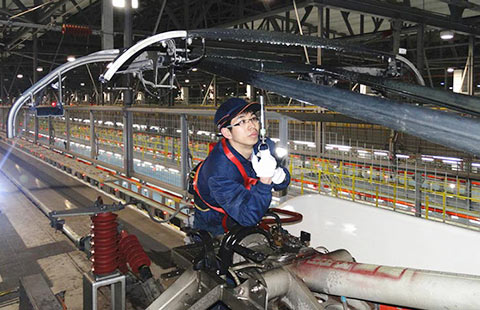A more rational mode of overseas investment
(China Daily) Updated: 2016-02-16 07:20
 |
|
A poster that reads "Creating London's next financial district and Asian Business Port" on derelict land at the Royal Albert Dock in east London. In recent years, European property has been a hot area for Chinese companies. [Photo/Agencies] |
It's only one and half months into 2016. Yet by all estimates, Chinese companies' activity in overseas mergers and acquisitions will break a historic record this year, following a recent series of deals of quite substantial commitments.
One example is the $43 billion takeover of the Swiss agribusiness company Syngenta by ChemChina, a Chinese chemicals group, reported in early February.
The major deals reported so far are but part of the phenomenon. They will be joined by the actions of small- and medium-sized enterprises.
Chinese companies' increasing cross-border investment is a by-product of the country's economic transition. It is a trend that the central government welcomes and provides due convenience to. But it is not, as it shouldn't be, just a government project.
When Chinese companies are faced by a nearly all-round glut in their traditional lines of business, it is only natural for them to make moves to create new revenue streams.
Overseas mergers and acquisitions may help them meet the domestic demand for high-quality products and services, and build up more trustworthy brands. And a better synergy can be established if they use an overseas takeover as a learning process that they may not get at home-for improving internal organization of a multicultural staff, and for managing relations with foreign customers and investors.
Indeed, it would be unthinkable if the transition of the world's second-largest economy remained a close-door event, without involving more inspiration and resources from the rest of the world.
Technically speaking, cross-border mergers and acquisitions are a risky undertaking, the most immediate being the inevitable rise in corporate debt. The larger a deal is, the more likely the investor is to be heavily financially leveraged. Bankers in the world may be wondering how they can cope with the current Chinese hunt for overseas assets. The Chinese public may also be asking how many of the expensive overseas takeovers may actually work.
But the fact that the takeover targets are more diverse, rather than being concentrated in a number of mineral resources, as many past Chinese takeovers tended to be, reflects a more prudent and rational approach.
More encouragingly, the Chinese investors also tend to be more diverse. The largest recent deals were not made by the largest State-owned corporations, but by companies with more experience competing in the global market.
There are always merger-and-acquisition deals that fail. However, there is reason to hope Chinese companies will do better this time around.
- First train from China to Iran stimulates Silk Road revival
- Next on New Third Board: Sexy shares
- Sales of adult toys soar on hot demand
- Fast food chains go up-market in China
- Holiday fails to warm up local market
- HK Disneyland suffers first loss in five years due to competition
- Tencent claims surge in digital red envelopes over New Year
- China's yuan firms after reassurance from central bank governor
















